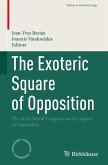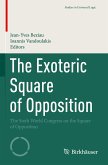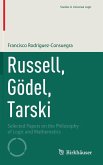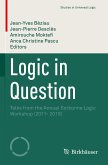This proceedings volume stems from the 7th World Congress on the Square of Opposition, which took place in Leuven, Belgium, in September 2022, after the previous editions in Montreux, Switzerland in 2007, Corté, Corsica, in 2010, Beirut, Lebanon in 2012, Vatican City in 2014, Easter Island in 2016, and Crete in 2018. This interdisciplinary event gathered logicians, philosophers, mathematicians, semioticians, theologians, cognitivists, artists, and computer scientists.
The theory of the square of opposition was developed based on a logical structure coming from Aristotelian logic, a square, which was expanded into more complex geometrical objects: hexagons, octagons, polyhedra, and even four-dimensional objects. It has been continuously studied for two thousand years and it can also be found in works by Gottlob Frege. Such a logical construction can be applied to many fields, ranging from metalogic to highway code, through economics, music, physics, color theory, and theology. This volume contains new advances on the different aspects of this theory: its history, philosophy, application, and mathematical shapes. The articles in this volume will be of interest to researchers and students in logic, mathematics, and philosophy alike.
The theory of the square of opposition was developed based on a logical structure coming from Aristotelian logic, a square, which was expanded into more complex geometrical objects: hexagons, octagons, polyhedra, and even four-dimensional objects. It has been continuously studied for two thousand years and it can also be found in works by Gottlob Frege. Such a logical construction can be applied to many fields, ranging from metalogic to highway code, through economics, music, physics, color theory, and theology. This volume contains new advances on the different aspects of this theory: its history, philosophy, application, and mathematical shapes. The articles in this volume will be of interest to researchers and students in logic, mathematics, and philosophy alike.








